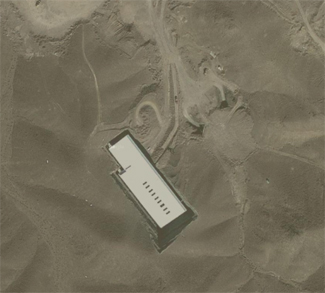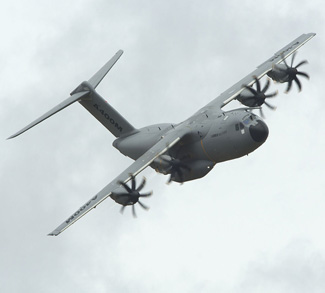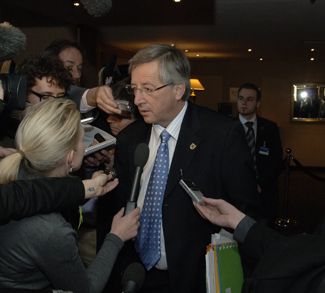The Russian invasion of Ukraine has highlighted the need for a significant reorganization of European defense. This article examines the evolution and objectives of European defense in the post-Ukraine war context, analyzing how the EU is redefining its security policies.
The February 2022 aggression has catalyzed significant changes in the European defense approach, reshaping strategies to consolidate a more robust and integrated response at a continental level. The belief that interstate warfare was a relic of the 19th and 20th centuries has characterized post-Cold War European security policy. However, current geopolitical tensions, previously underscored by the events in Georgia in 2008 and Ukraine in 2014, have necessitated a radical security rethink. The Kantian perspective of perpetual peace has been overturned by Russian expansionism, and the resurgence of aggression warfare in Europe has shown that stability can no longer be guaranteed without a concrete strengthening of the EU’s defense capabilities.
A new arms race in Europe
The past decade has seen a significant and steady increase in European defense spending, with many countries committing to meet NATO’s 2% of GDP target. Overall, defense budgets have risen from €182 billion in 2014 to a projected €326 billion in 2024.
Operationally, the EU has intensified its joint operations and promoted coordinated military exercises to integrate national armed forces. Initiatives like the EUFOR exercise aim to improve operational readiness and crisis response capabilities. Simultaneously, there has been a significant increase in investments in advanced technologies. In this context, the European Defense Fund has been crucial in funding research and development of new military technologies, including drone warfare and cyber defense systems.
Toward a common defense policy: PESCO
The Permanent Structured Cooperation (PESCO) plays a crucial role in promoting European integration in the defense field. Established in 2017, PESCO involves 26 of the 27 EU member states (excluding Malta), focusing on developing collective defense capabilities, coordinating investments, and improving interoperability of national armed forces. Currently, 66 projects are being developed, covering areas such as training, land, maritime, air, and cyber defense.
PESCO’s objectives include progressively increasing defense spending and strengthening the rapid mobilization capacity of military units, without constituting permanent forces. The recent strategic review, approved by the European Council in November 2024, aims to strengthen PESCO, adapting it to the new geopolitical reality and ensuring it can effectively respond to current and future security challenges. This initiative for coordinated European defense is fundamental for member states, as it enhances defensive capabilities at both national and regional levels, making Europe more cohesive and resilient.
Growing risks to European security
The European Union faces a rapidly evolving security landscape, where the major threat comes from the aggressive foreign policy of the Russian Federation. The EU’s historically passive approach to Moscow has paved the way for an aggressive and expansionist strategy in the Kremlin. In 2008 and 2014, the Union failed to provide a decisive response, demonstrating a certain reluctance to openly confront Russia.
The full-scale invasion of Ukraine represents the natural consequence of the Russian imperial vision, facilitated by inadequate responses in Europe. Moscow has shown disregard for the sovereignty and territorial integrity of its “near abroad,” and today it stands as the major threat to the continent’s security.
Alongside traditional defense, Russia also threatens Europe through hybrid warfare strategies. These threats include disinformation campaigns, sabotage of undersea cables, and cyberattacks. The unconventional nature of these actions makes them difficult to identify and counter. This type of aggression aims to exploit vulnerabilities without triggering a direct military response, operating through means that are difficult to attribute and, therefore, openly counter.
Moreover, special attention must be paid to interference in the domestic politics of other states, especially through disinformation campaigns and support for pro-Russian parties, as recently observed in Moldova and Romania. These interventions seek to influence public opinion in favor of Moscow in an anti-Western key, fueling internal divisions and instability.
Current trends in European defense spending
While the first part of the century was marked by relative stagnation, the last ten years have seen a steady increase in defense spending. This trend is attributable to two key events: the annexation of Crimea in 2014 and the invasion of Ukraine in 2022.
As reported by the European Defence Agency (EDA), defense spending grew from €147 billion in 2014 to €214 billion in 2021. Between 2021 and 2024, the budget increased by over 30%, reaching €326 billion in 2024. Expenditure is expected to rise by more than €100 billion by 2027. The prospect of a further increase reflects a significant shift in European security strategy and, above all, a change in the perception of the role Europe intends to play in a multipolar global landscape, reducing dependence on the United States.
This new geopolitical outlook has underscored a reality that European leaders have ignored for too long: the need for an integrated and autonomous defense. To date, the EU has invested in community security initiatives that remain fragmented and lack a long-term strategic vision. Efforts are predominantly focused on short-term solutions that lack structured planning to ensure a competitive and sustainable defense industry over time.
The difficulties encountered with military support to Ukraine are an evident demonstration: insufficient production of equipment and munitions, poor standardization of equipment, and logistical difficulties related to the diversity of armaments provided by member states.
After decades of inertia, a first attempt at defense coordination dates back to 2004 with the creation of the European Defence Agency, designed to harmonize the efforts of individual states in community security. Only more than a decade later more structured initiatives were launched, such as the aforementioned PESCO, which provides a framework for military collaboration between member states, and the CARD (Coordinated Annual Review on Defence), aimed at guiding European investments in the defense field.
Currently, the underlying problem of community defense is the lack of a militarily common and coordinated vision among EU countries. The budget of €326 billion divided among member states remains at the discretion of the Ministries of individual countries, which, although they may follow the guidelines suggested by Brussels, are unlikely to act in a coordinated manner in investments.
It is also important to signal the difference in investments between Eastern European states, which perceive the Russian threat more. Poland stands out with an investment equivalent to 4.12% of its GDP, followed by Estonia and Latvia. In stark contrast, countries like Italy, Spain, and Portugal, where fears of a military threat are less felt, are found at the bottom of the list.
The challenges of community defense funding
In addition to the structural and operational challenges related to building an effective community defense, there is also political resistance from member states, which are often reluctant to accept greater supranational involvement, especially in a context where national sovereignty continues to be a sensitive issue, frequently instrumentalized by Eurosceptic political forces. Yet this opposition to a common defense does not only come from the most extremist forces; it sometimes comes from European governments themselves.
Two emblematic examples exemplify this dynamic. The first concerns Germany’s firm opposition to the proposal to allocate €100 billion from the NextGenerationEU fund to finance the European Defence Industry Programme for the 2028-2034 period. Berlin, faithful to its line of fiscal rigor and public debt rejection, has expressed the will to exclude any form of military financing based on debt funds.
The second case concerns French reservations, linked to fears that a community defense policy could compromise the international competitiveness of its national defense industry. Since the 1950s, France has maintained a marked sovereigntist approach to defense, hindering any initiative that might limit Paris’ strategic autonomy.
Yet these concerns are based on a concrete foundation: between mid-2022 and mid-2023, 78% of the total spending on armaments by EU countries was allocated to non-European suppliers, with 63% of the total directed to the United States. Such dependence raises questions about the EU’s real capacity to develop its strategic autonomy.
A gradual narrowing of the technological gap
Inevitably, the funding issue also concerns investments in R&D, a sector that the EDA has re-engaged with only at the end of the last decade. From 2011 to 2018, EU countries allocated less than 20% of their total defense spending to technological upgrades of their armed forces, generating a cumulative investment deficit of approximately €25 billion. Starting in 2019, new investments in defense have sought to compensate for this deficiency and are progressively addressing operational gaps in both the short and long term.
In 2024, the EDA identified a series of strategic macro-areas to focus efforts, to bridge the technological and operational gap and strengthen the ability to respond to potential threats. Specifically, these include the Integrated Air and Missile Defence (IAMD) sector, for which the CARD Report outlined an approach to bridge critical gaps in air and missile defense, with particular attention to short-range capabilities, such as counter-unmanned aerial systems (C-UAS) and Short-Range Air Defense (SHORAD) systems. Another crucial area concerns the individual equipment of armed forces, with particular regard to biological, chemical, radiological, and nuclear (CBRN) protection devices.
The constant increase in the defense budget in recent years reveals a tangible evolution in community defense policy, especially considering that the modernization process of European armed forces officially began with the Preparatory Action on Defence Research (PADR) in 2017. The PADR, designed as a pilot project and funded by member states with over €90 million, was active until 2019 with the explicit aim of outlining the European military research strategy starting in 2021. Its legacy is today visible in the “2025 EDF Work Programme”, the annual plan of the European Defence Fund for the development of military technologies in terrestrial, maritime, aeronautical, space, and cyber sectors.
Approved in late January 2025, the program plans for the current year an investment of €1.065 billion, aimed at supporting research and development in the defense sector, while simultaneously reducing the fragmentation of national investments. To date, the EDF represents the main community tool for financing technological innovation in the military field, consolidating the role of the European Union as an increasingly structured actor in the global security landscape.
The future of European defense
Europe has not seen such dynamism in the defense sector since the Cold War era, when there was still discussion about the creation of the European Defence Community (EDC), an initiative that ultimately foundered in 1954 due to strong French opposition to such a transfer of sovereignty. Today, the challenge persists, further hindered by similar issues, among all the reluctance to cede such a high level of sovereignty to the European Union, not to mention the persistent neutrality of Austria and Malta, which hampers military integration, and Hungary’s ambivalent policy, often clashing with Brussels. The issue of community defense is further complicated by the absence of a single common European foreign policy.
Yet on paper, the EU is today the world’s second-largest military spender. Indeed, signs of a concrete recovery are emerging, for example, last March the European Commission outlined a draft strategic framework for 2035, which would require member states to ensure that 60% of their equipment comes from European manufacturers.
Finally, regarding the future of European defense, it is important to mention the Draghi report, which highlights the urgency of a new strategic paradigm. According to the report, given Washington’s gradual disengagement, the EU should allocate at least 5% of its GDP to defense, with a view toward eventual autonomy from its American ally.




